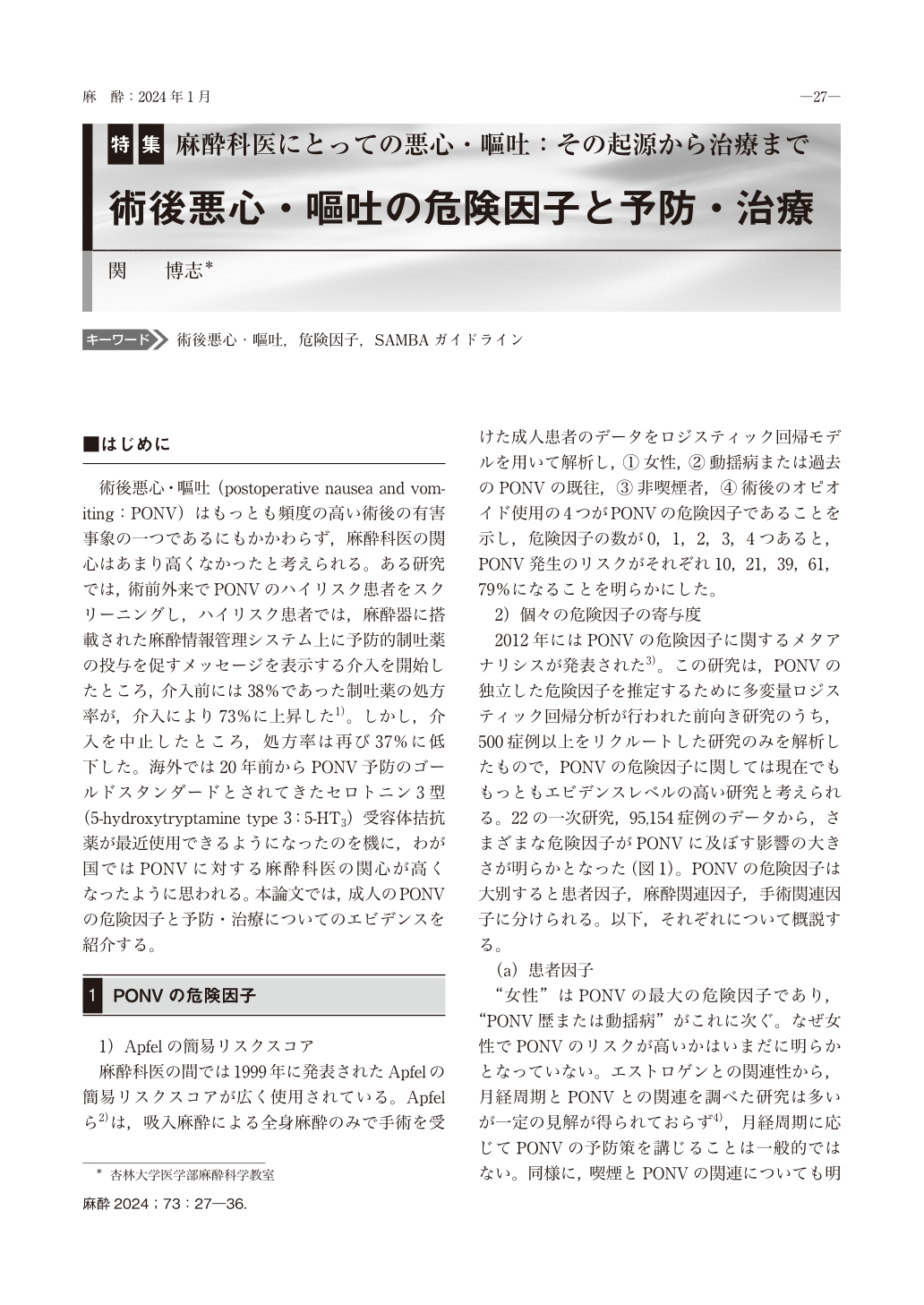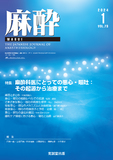Japanese
English
- 有料閲覧
- Abstract 文献概要
- 1ページ目 Look Inside
- 参考文献 Reference
はじめに
術後悪心・嘔吐(postoperative nausea and vomiting:PONV)はもっとも頻度の高い術後の有害事象の一つであるにもかかわらず,麻酔科医の関心はあまり高くなかったと考えられる。ある研究では,術前外来でPONVのハイリスク患者をスクリーニングし,ハイリスク患者では,麻酔器に搭載された麻酔情報管理システム上に予防的制吐薬の投与を促すメッセージを表示する介入を開始したところ,介入前には38%であった制吐薬の処方率が,介入により73%に上昇した1)。しかし,介入を中止したところ,処方率は再び37%に低下した。海外では20年前からPONV予防のゴールドスタンダードとされてきたセロトニン3型(5-hydroxytryptamine type 3:5-HT3)受容体拮抗薬が最近使用できるようになったのを機に,わが国ではPONVに対する麻酔科医の関心が高くなったように思われる。本論文では,成人のPONVの危険因子と予防・治療についてのエビデンスを紹介する。
Postoperative nausea and vomiting(PONV)is one of the most frequent postoperative adverse events, but it sometimes does not receive sufficient attention in clinical practice. Overseas, serotonin 5-HT3 receptor antagonists have been considered the gold standard for PONV prevention for the past 20 years. These agents recently became available in Japan, where PONV has received increasing attention from anesthesiologists. Several researchers have investigated PONV over extended periods, and high-quality evidence has been accumulated. However, it remains necessary to expand our knowledge regarding the risk factors, prevention, and treatment of PONV, and to be aware that the implementation of evidence-based medical care in routine clinical practice can improve patients’ postoperative quality of life. In this article, I discuss risk factors for PONV and the prevention and treatment of PONV in adults.

Copyright © 2024 KOKUSEIDO CO., LTD. All Rights Reserved.


